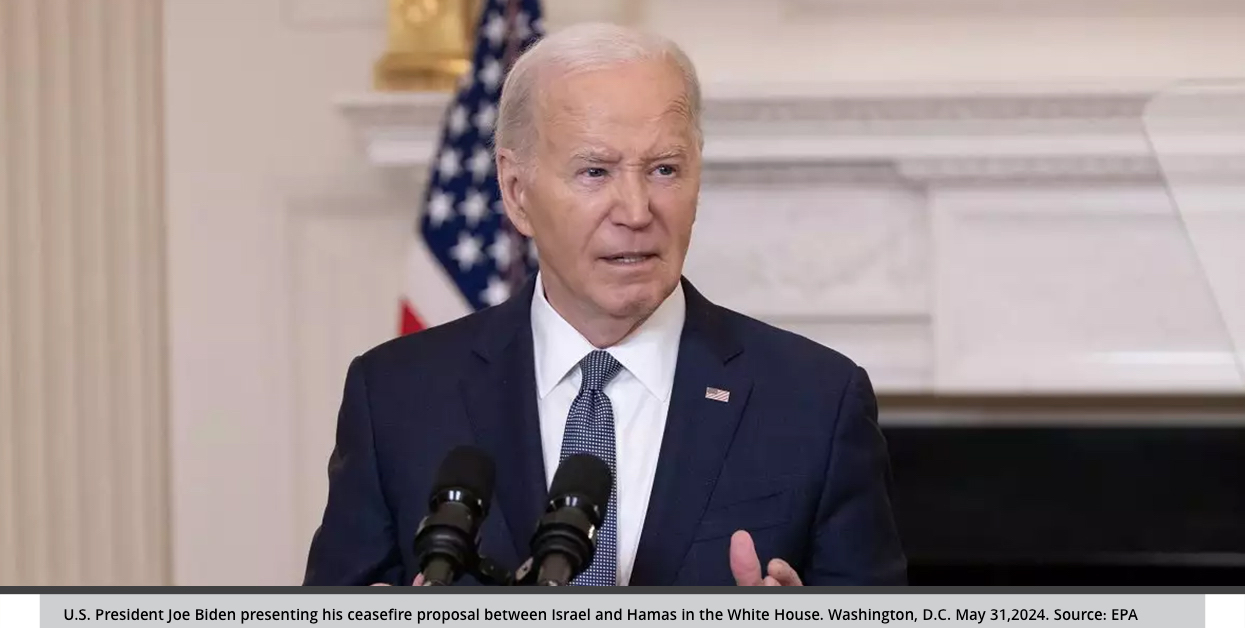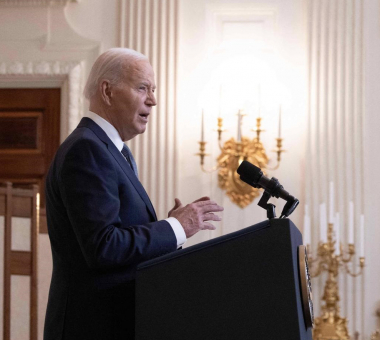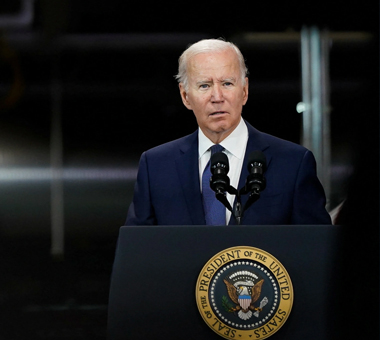In a speech on the Middle East delivered at the White House on May 31, 2024, President Joe Biden presented his proposal for a “durable end to the war” in the Gaza Strip. His plan to halt hostilities is divided into three phases, with the second and third phases dependent on ongoing negotiations between Israel and Hamas during the first phase.
The proposal received widespread international and regional support in its initial hours after the speech, and the warring parties showed positive reactions towards it. However, upon closer examination, Biden’s plan quickly revealed several complexities that may hinder its implementation or cause it to stumble during execution.
Biden’s Phased Vision for Stability
First, neither Biden nor other American officials nor even the public draft of the agreement presented by the United States referred to the term “phased vision.” Media and analytical reports used the word plan or proposal to describe what Biden called a “roadmap.” Nonetheless, his speech and the breadth of issues addressed in it indicate that the U.S. administration seeks to establish a vision for stability in the Middle East based on a phased set of post-war arrangements that may extend beyond the scope and future of Gaza.
Notably, Biden linked the success of the deal to launching simultaneous diplomatic paths that include achieving stability between Lebanon and Israel, implementing a two-state solution, and concluding a normalization agreement between Israel and Saudi Arabia. Thus, Biden’s proposal for Gaza is part of a broader vision for stability in the Middle East.
Briefly summarized, the plan involves three phases.
- The first phase includes a complete and temporary ceasefire with the release of a number of people held hostage—women, the wounded, and the elderly—in exchange for the release of hundreds of Palestinian prisoners. This phase lasts six weeks, during which both parties negotiate the details of moving to the second phase. Importantly, the plan stipulates that “the ceasefire will still continue as long as negotiations continue.”
- If both parties successfully transition to the second phase, it will see the release of all hostages, including soldiers, in exchange for Israel’s complete withdrawal from the sector, transforming the temporary ceasefire into a permanent end to hostilities.
- The third phase involves reconstruction plans for Gaza and the return of the remaining bodies of Israeli soldiers to their families.
Implementation: Complexities Lie in the Details
Biden’s plan sets a clear initial goal—ceasefire—and an explicit ultimate aim: sustainable cessation of the war. But, as the German philosopher Friedrich Nietzsche pointed out, “The devil is in the details.” The plan’s path from implementation to completion faces several complications and contains gaps that could disrupt it, specifically in Four main issues.
First, the complexity surrounding the concept of a ceasefire, described as a “cessation of hostilities” in the plan, is a vague and broad term regarding the definition of hostilities and what it applies to. Both Israel and Hamas have a gap on this point. Hamas wants a complete end to the war and views the inclusion of an Israeli withdrawal and reconstruction positively, but it approaches the ambiguity surrounding ceasefire arrangements and Israeli withdrawal from all of Gaza cautiously.
Conversely, the Israeli government still refuses any permanent truce that ends the war before achieving its objectives, thus making its acceptance of the plan conditional on continuing the war. This means the Israeli vision differs entirely from that of the U.S. administration, as it is primarily about prisoner exchange for the Israeli government, while Biden views it as having multiple objectives.

Second, the lack of real guarantees for a sustained ceasefire is another issue. Biden specifically mentioned that “the United States will help ensure that Israel lives up to their obligation” and that Egypt and Qatar will work to ensure that Hamas does too. Where are the guarantees and what are the consequences for breaking the ceasefire?.
During the war, Washington showed great difficulty in exerting influence over the Israeli government, rejecting American demands that it improve the living conditions of Palestinians in Gaza, agree to the Paris negotiation framework, amend its governing the Palestinian West Bank, and stop withholding Palestinian tax funds. This raises doubts about any American guarantee.
On the other hand, presenting Egypt and Qatar as guarantors for Hamas contradicts American and Israeli claims about Qatar’s limited ability to influence Hamas and its insufficient leverage over its leaders. Furthermore, Israel doubts the neutrality of Qatar as a mediator. But perhaps most damning, earlier this year, as reported by CNN on May 22, 2024: “Egyptian intelligence quietly altered the terms of the ceasefire proposal signed by Israel,” which “led to a wave of anger and recrimination among officials from the US, Qatar and Israel, and left ceasefire talks at an impasse.”
Third, the execution of the plan does not necessarily mean its eventual success. Negotiations during the first phase will determine whether to move to the second phase or return to war. The primary and inherently complex negotiation issues addressed in this stage include the future governance of Gaza, who will manage reconstruction efforts, and the fate of Israeli engineering in Gaza, such as the Netzarim corridor and the buffer zone. Meanwhile, Hamas is aware that by agreeing to the first phase and releasing non-military detainees, it loses part of its power leverage in the war.
Fourth, Hamas’s continued negotiation throughout the plan’s phases implies American recognition of the movement’s influence in Gaza. Washington reliance on the negotiation path to push the movement to make concessions—regarding its pursuit to regain control of Gaza, handing over its leaders involved in the October 2023 attacks, or accepting disarmament—raises an important question about the negotiation leverage capable of imposing these concessions on Hamas.
Previous Models Predict Failure
Biden’s plan may appear on the surface to be close to gaining the approval of all parties, especially since it was issued by the U.S. president and presented as an Israeli proposal to Hamas. This means its implementation requires only Hamas’s approval and international and regional support. The leaders of Canada, France, Germany, Italy, and Japan supported Biden’s plan, and a joint statement from the foreign ministers of Saudi Arabia, Jordan, the United Arab Emirates, Qatar, and Egypt emphasized the importance of dealing seriously and positively with the ceasefire proposal. However, examining the intertwined positions makes it difficult to guarantee the plan’s implementation or the approval of Hamas and Israel.
On one hand, Biden aimed to pressure the warring parties directly by publicly proposing the plan. While it came from the leader of the most influential and powerful country in the war and, historically, regarding the Palestinian issue, it is insufficient given Biden’s previous attempts and pressures.
For example, Biden expected a ceasefire to be in effect within a week of this statement he made in February: “My national security advisor tells me we are close, we are close, and we are not done yet. I hope that by next Monday, there will be a ceasefire.” Yet nearly four months later, ceasefire proposals continue to stumble.
On the other hand, international pressure to implement the plan and one party’s formal approval may increase its chances, but in the complex war scene, negotiation stumbling is strongly present. Earlier this year, on May 6, Hamas announced its agreement to a ceasefire proposed by Egyptian and Qatari mediators. And Israel was supposed to have agreed to it previously in the presence of U.S. CIA Director Bill Burns. However, the Israeli government quickly refused its approval and immediately launched a military attack on Rafah, seizing control over Gaza’s vital border crossing on May 7.

How Intertwined Positions May Fail the Phased Plan
The initial positions of the warring parties reflect complexities and interconnections in their internal scenes. Hamas viewed the plan positively, but its final stance depends on the intersections of four main parties: its political bureau, its military wing inside Gaza, the guaranteeing mediators (Egypt and Qatar), and Iran.
While the first party may show flexibility in approving the plan, pressured by mediators who welcomed it from the first hours of its presentation, this may collide with the positions of Hamas’s military wing and Iran. The latter expressed its rejection of the proposal through acting Iranian Foreign Minister Ali Bagheri Kani: “If the Americans are honest, then instead of proposing plans under the name of a ceasefire, they must take one step, which is end all aid to the entity Israel.”
In Israel, which is assumed to agree to the plan since Biden presented it as an “Israeli proposal,” Prime Minister Benjamin Netanyahu’s position reflects the complexity in approval or rejection. A broad stream inside Israel pressures for the plan’s approval, including Israeli President Isaac Herzog, who announced his support for Netanyahu to approve the plan, and opposition leader Yair Lapid’s promise to provide the prime minister with a safety net in the Knesset.
However, Netanyahu’s approval means the collapse of the coalition government and weakening his position against the opposition, which may only grant him temporary and limited security. The extremist parties in the coalition government oppose the plan, particularly Finance Minister Bezalel Smotrich, who described it as “a dangerous proposal,” and National Security Minister Itamar Ben-Gvir, who threatened to dismantle the government if Netanyahu approved a ceasefire without “destroying Hamas and returning all the hostages.”
Finally, the plan presented by Biden is surrounded by many complexities that may hinder or even prevent its implementation. What Biden presented expresses a stance announcement and is closer to his own foreign policy visions. It can be seen as a proposal to stop the war, but it does not bring anything new to the negotiations. The points and details it includes had been already discussed weeks after the war began, but the issues and files it overlooked are the main points of contention between the warring parties.
Nevertheless, the plan might currently offer a way out for Hamas and Israel and an opportunity to stop the war in Gaza if regional and international pressure increases to approve it.
Keep in touch
In-depth analyses delivered weekly.


Related Analyses:











.jpg-%D9%87%D9%84-%D9%86%D8%B4%D9%87%D8%AF-%D8%A7%D8%AE%D8%AA%D8%B1%D8%A7%D9%82%D8%A7%D9%8B-%D9%81%D9%8A-%D8%B5%D9%88%D8%B1%D8%A9-%D8%A7%D9%94%D9%85%D8%B1%D9%8A%D9%83%D8%A7-%D9%84%D8%AF%D9%89-%D8%AD%D9%84%D9%81%D8%A7%D9%8A%D9%94%D9%87%D8%A7-%D9%81%D9%8A-%D8%A7%D9%84%D8%B4%D8%B1%D9%82-%D8%A7%D9%84%D8%A7%D9%94%D9%88%D8%B3%D8%B7.jpg)